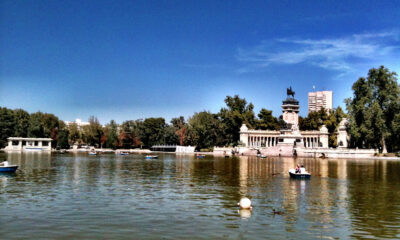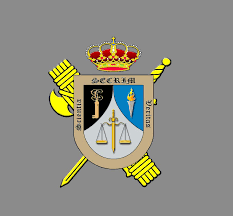

Driving in Spain
NOT ALL TRAIN SAILING TO ALICANTE
The AVE High Speed train finally arrived from Madrid to Alicante this week, amid the pomp and ceremony that would normally accompany an historic inauguration ceremony. With the AVE project originally proposed by the Zapatero government in 1999, the Ali…
Related Posts:
The post NOT ALL TRAIN SAILING TO ALICANTE appeared first on Today in Spain.

The AVE High Speed train finally arrived from Madrid to Alicante this week, amid the pomp and ceremony that would normally accompany an historic inauguration ceremony. With the AVE project originally proposed by the Zapatero government in 1999, the Alicante stretch was announced in 2001, with “late 2012” being the proposed start date, but this date was delayed until 2013 under the new, Rojoy led PP administration.
The future King of the country, Prince Filipe, along with the President of the Government, Mariano Rajoy, and the President of Valencia, Alberto Fabra, who joined the train at the brand new Villena station, were the highest profile passengers on the first run on Monday, stopping off at Albacete for a mini ceremony, and to pick up María Dolores de Cospedal, the Secretary General of the Partido Popular and President of Castilla la Mancha, the train arrived, as scheduled, to an eagerly awaiting crowd of supporters and members of the press.
But, the event was not without its fair share of controversy, protest and political discussion. Around 500 people are said to have congregated in the streets around the station, where over 20 National Police riot vans were already stationed, anticipating a vocal protest.
The unification of society was one immediate and obvious result of the opening ceremony, as countless protest groups did indeed come together, from those protesting the banks, to those against evictions, disabled rights groups, healthcare workers, neighbourhood groups and rail workers themselves, all standing side by side, united with one common opinion, how the government cuts are affecting the daily lives of real people.
A large number of railway workers are unhappy over the cuts being implemented across the network, not only in the number of services being axed, in a move almost echoing the days of Beeching in the UK, but also the loss in budget and subsidy, of up to 40% in places, most of which is to hack right into the heart of the workforce, with the imminent loss of thousands of jobs.
And so, amidst the muffled noise of the protestors outside, with each door to the station guarded by at least 10 police officers, the speeches announcing the welcome and the progress of the future of rail travel were made, becoming tense as three firecrackers were thrown, but largely ignored by the determination of the speakers to carry on regardless.
But what of this “future” we speak of. The train that carried the VIP´s, presumably one of the nicest, cleanest and most modern in the fleet, after all, this was an auspicious occasion, was already 20 years old, manufactures in 1992, entering service in 1993. It had been refurbished in 2009, but if you can remember the last days of British Rail, before the publication of The Railways Act 1993, when British Rail was to be broken up into 100 different companies, you can already see the sort of life our futuristic, top of the range train has experienced.
The 165 kilometres of high speed track from Madrid to Alicante itself doesn´t run cheap, at a cost of 11.6 million euro per kilometre, totalling 1.9 billion, with 231.8 million euro of the total being financed by the EU, that line is set up for the future, with speeds set to be able to increase, once the signalling system receives a further upgrade in the future.
The investment in the rail network is also highlighted by the brand new station at Villena, with its 11 million euro price tag, it is located “in the middle of nowhere”, surrounded by one of the poorest road networks in the country, the investment in the railway element failed to spread to the roads, with no money to fund the infrastructure beyond the boundary fence.
As the speeches came to a close, there a wave of nervous tension, as the police started to push back the crowds, so as to clear a path for the dignitaries, with several protestors starting to throw stones at police and even block the road with boulders. Although not fully kitted out in their riot gear, preferring to give this event a softly, softly image, the police had no option but to then take what they would call a “defensive” approach, although what could easily be seen as another wave of unnecessary violence towards “peaceful” protesters. Four people were arrested for public order related offences, mostly accused of assaulting police officers, but this led to a further protest of around 100 people on Thursday, campaigning for the release of the detainees.
With incredible sales the moment the ticket offices opened, and selling out almost all seats on the ten trains on the first Friday within days, there is no question that the launch was popular, but as it coincided with one of the major fiestas on the Alicante coast, we can only wait to see if the longevity of that popularity can be maintained.
A government study has anticipated a 40% increase in rail passengers, revenue of 70 million euro per year and the creation of 700 jobs. But, albeit in a different era and financial climate, when there was perhaps more money to spend on higher priced travel options such as planes, when the Valencia route opened in 2010, there were to be an anticipated 3.6 million passengers, but they barely reached 1.9 million in the first year, dropping to 1.7 million the next. The Valencia route anticipated the creation of 136,000 jobs, both directly and indirectly, but the reality of unemployment figures speak for themselves. Requena station, that route´s equivalent to Villena, is lucky to see 50 passengers per day.
The future has arrived and it is here today, at least from the concepts of those proposed at the end of the last century, but the reality of the future lies with each and every one of the potential passengers the network can carry. With shortened journey times, luxurious enough trains, despite their age, and relatively cheap pricing, not to mention the frequency of the service, are all factors that make it a viable concept for travellers, but only if it is used, and so, may we all be children of a new railway era and perhaps sample the Spanish high speed network at least once, after all, when it spreads further to the south and Orihuela, it will soon be even closer than we might think.
Filed under: http://www.theleader.info/article/39570/
Car and Motor Insurance | Spanish Home Insurance | International Money Transfers | Send Money to Spain | Spain Property | Online International Payments | Property in Spain
Costa Blanca Property for Sale | Cabo Roig Property for Sale | International Payments |
The post NOT ALL TRAIN SAILING TO ALICANTE appeared first on Today in Spain.


























